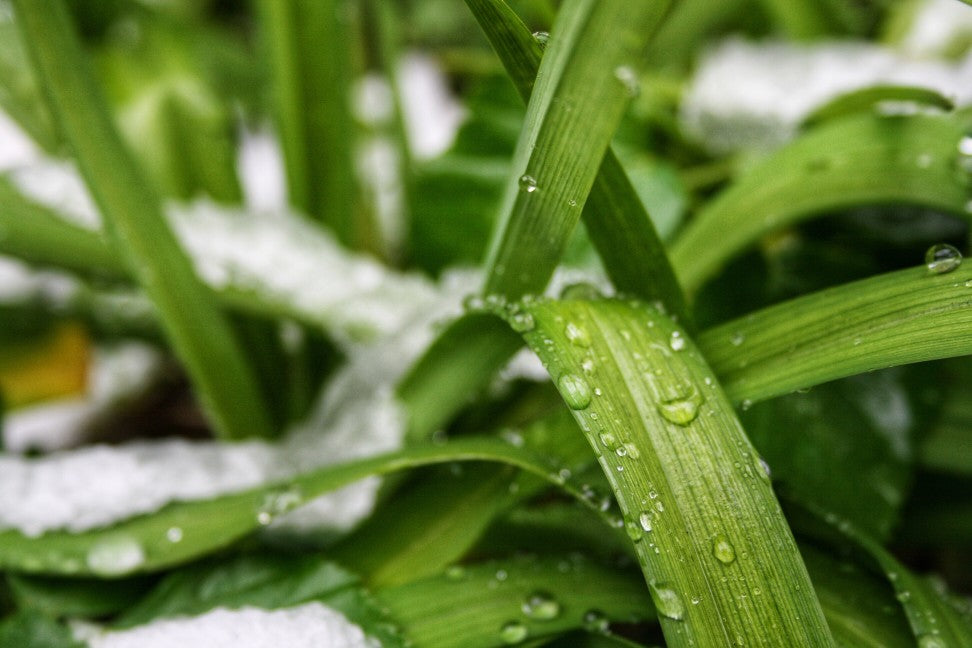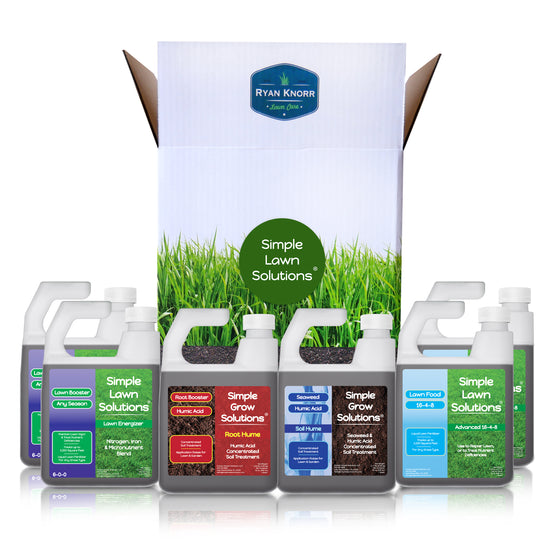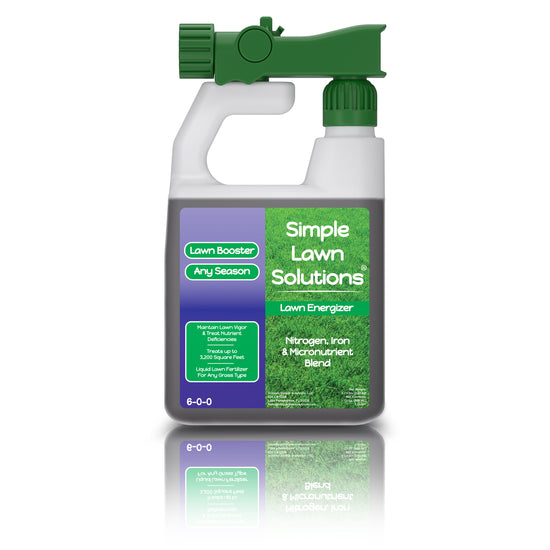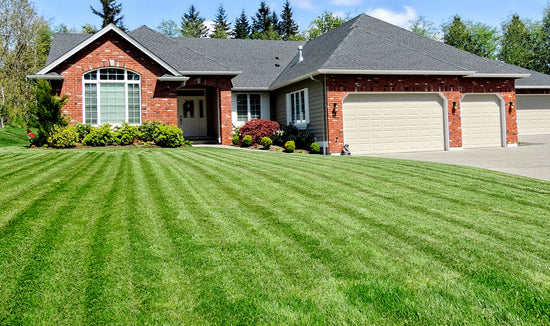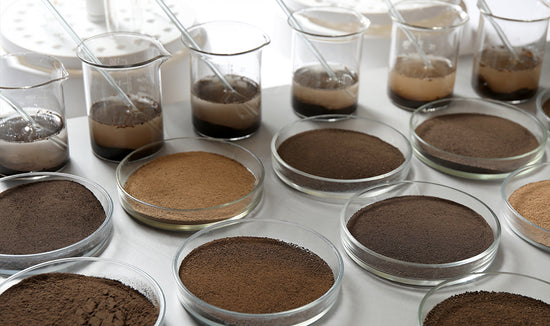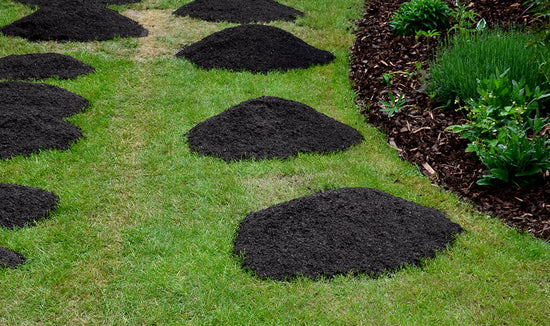Winter is the season with the least amount of lawn care duties. However, if you don’t adjust your grass care regimen, you could end up with an uneven lawn in springtime. Worse over, you might have to plant new seed or lay new sod to replace the lawn that fell victim to winterkill or disease. At Simple Lawn Solutions, we want to help you make sure that doesn’t happen. Ensuring a healthy winter season for your lawn begins with identifying your zone, and your grass.
Cool-Season Zone
The area most affected by the harsh winter season is the cool-season zone. The cool-season zone is the northern half of the United States. In this area of the country, most lawns contain cool-season grasses. These grasses can survive harsh winters better than their counterparts, warm-season grass, which is why they are used on lawns across the northern U.S. Even if you don’t live in the cool zone, your lawn may have cool-season grass! If you live in the Transition Zone, in the middle of the United States, and often have cooler temperatures year-round, maybe some snow here and there, you could have cool-season grass.
Cool-Season Grass
For those that live in the Transition Zone, you may still be unsure whether you have warm-season or cool-season grass. Here are a few of the most common cool-season grasses to help you identify your lawn:
- Fine fescue
- Kentucky bluegrass
- Perennial ryegrass
- Tall fescue
What to Know About Cool-Season Grass
As mentioned, cool-season grasses can withstand harsh winters better than other types of grass. They are very versatile, adaptable grasses. The best temperatures for cool-season grass to grow are between 65 degrees and 80 degrees. As soon as the summer weather gets too hot, or the winter weather gets too frigid, your cool-season lawn will stop growing. But that doesn't mean your lawn is dead; it is just dormant! It’s important to adapt your grass care through the winter to keep a healthy lawn.
Winter Dormancy for Cool-Season Grass
Your winter lawn acts differently than in any other season. In the wintertime, your lawn enters "dormancy." Your winter lawn moves all of its nutrients from your final fertilizing session into its roots, where it waits out the winter weather. While homeowners with warm-season lawns fear their winter lawn may die, your cool-season lawn has a great chance of survival. During dormancy, your winter lawn may look dull or lose its green, but that doesn’t mean it’s dead. The most important part of your lawn care is preparing your lawn to enter a healthy dormant state in winter.
Prepare for Winter
While cool-season grass can survive cold temperatures, any winter lawn is at risk for disease and death. The critical time in your lawn care is not actually during the winter; it’s during the fall. During winter, you won’t be able to control the weather or how your lawn responds. With your lawn in a dormant state, you might not even be able to see the actual damage winter has done to your lawn until springtime. Choose a grass care plan that prepares your lawn for winter. It’s the only way you can control the outcome of your lawn when the growing season returns.
Aerate & De-thatch
Before winter, give your lawn some room to breathe by aerating it in the fall. When you aerate your lawn, you are allowing air, nutrients, and water to move freely throughout your soil to reach your grass roots. Aerating your lawn before the winter season can prevent having a compacted lawn by the time winter is over. De-thatching your lawn is also an essential step in lawn care, as clumps of leaves and thatch can become a breeding ground for disease. The more even and debris-free your lawn is entering winter, the better!
Fertilize Cool-Season Grass
Unlike warm-season grass, the first fertilizing session of the growing season for cool-season grass is in the fall. Choosing the right fertilizer can be a make-or-break step in your lawn care. We recommend using the 16-4-8 Liquid Lawn Food for fertilizing, as it gives your plants the nutrients it needs for its fall growing season and delivers a balanced formula so your grass can stow the necessary macronutrients away for winter. Follow up with a Lawn Booster to maximize the growth and health of your lawn before the winter sets in.
Watering in Winter
In the winter, you should decrease the amount of water used in your grass care. Water pooling is a primary concern during the winter. Since your winter lawn is dormant, it isn’t soaking up the water as often as a growing lawn. That can lead to puddles of water on your lawn, suffocating your lawn, and breeding disease. Adjust your watering schedule to the weather. If there is more rainfall or snow, significantly decrease the amount of water on your lawn, or don't add any more water during those weeks. One more important tip: all watering in the winter should be completed with a hose, and sprinklers should shut down during the winter!
Note on Sprinklers
Most cold zone states see freezing temperatures many times during the winter. If you have water in your sprinkler systems during those days, your pipes could crack from the expansion of the ice. For those reasons, we recommend shutting down your sprinklers for the winter. Even if you turn off your sprinklers, there is still sitting water close to the ground, so make sure your drain your sprinklers to avoid cracked pipes! You also want to insulate your backflow preventers and valves if they’re above ground, but consult the owner’s manual for your sprinklers for exact details.
Winter Months
The hard part is over! Lawn care to prepare your winter lawn is mostly complete in the fall. Your grass care for your winter lawn during those winter months is all about monitoring your grass. How much water is it getting? Is there a lot of debris on your winter lawn? Are there signs of disease? By paying attention to your lawn, you will be able to adapt your lawn care plan.
Snow Misconception
Many homeowners get anxious about their lawn when the snow starts to fall. Let us put your worries to rest: snow can be good for your lawn! Snow creates a barrier between your grass and the sharp chill of winter temperatures. If your grass was exposed to that cold chill straight on, you might have a dead lawn pretty soon, so leave the snow to protect your lawn.
Ice, Ice, Ice
When ice comes to your pathways and driveways, it’s easy to throw down rock salt or ice melt and trust it will be melted. But remember that your lawn often borders those pathways and driveways, so the ice melt you just put down is trickling onto your lawn! You don't want your lawn to have burnt edges because of ice-melting salt. If you really want to be careful, try breaking up the ice manually first to see if you can avoid rock salt or chemicals altogether. But if you live in a very snowy area, you may have no choice but to use a chemical reaction. Avoid compounds like calcium chloride and choose calcium magnesium acetate instead. This will allow you to break up the ice so you can walk safely without harming your winter lawn!
Winter with Cool-Season Grass
The majority of your lawn care for winter is about preparation. Once your preparation is complete, there’s not much to worry about, especially with cool-season grass. Cool-season grass can withstand harsh winters, year in and year out.


